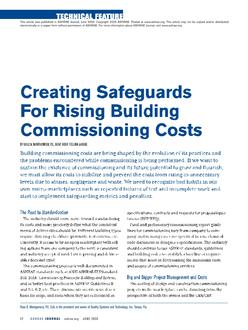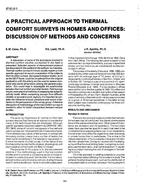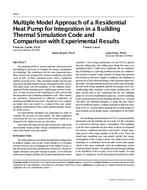This paper studies a weather resistive barrier and drainage membrane for residential and commercial construction, formed from a thin (0.55 mm) sheet of HDPE with a pattern of studs and channels that provide for a drainage and ventilation space on both sides of the sheet.
The 3-dimensional membrane provides a secondary plane of moisture resistance to withstand inward moisture transport. It acts as a separator between cladding and secondary plane of moisture resistance (the plastic sheet), creating a drained and vented air space that provides a capillary break and drainage path. The product provides for more rapid drying of material outside the moisture barrier by allowing air movement through the cavity. In addition, the membrane provides a second interior drained and vented air space between the plastic sheet and the sheathing board that accelerates drying of materials inside the plane of the product by allowing air movement through this space.
Airflow, drainage and drying characteristics of wall assemblies employing the proposed embossed weather resistive barrier were independently tested in full-scale wall systems. The laboratory data was then used to validate features of an advanced hygrothermal computer model. Good agreement was found between lab data and model predictions. Following this, the advanced computer model was utilized to evaluate the hygro-thermal performance of these wall assemblies for 5 different climates: Toronto, Seattle, Atlanta, Baton Rouge, and Norfolk.
Dynamic time dependent interior and exterior conditions were included in the hygric analysis. A transient moisture analysis was deployed to understand the complex heat, air and moisture transport present in the envelope walls.
Within the simulated timeframe the hygro-thermal results conclusively demonstrate the beneficial performance of this 3- dimensional membrane. Ventilation on both sides of the membrane has shown enhanced drying performance when compared to asphalt impregnated building paper. An extensive improvement in moisture management has been proven when employing the proposed weather resistive barrier, which performs far better than conventional building paper in regards to drying performance of the wall cavity.
Further long-term field testing as part of a field investigation is currently ongoing at the ORNL Natural Exposure Test facility in Charleston, SC. Results from this study, as well as incorporation of those results in advanced hygro-thermal computer modeling, will be available at the time of presentation of this paper.
Presented at Thermal Performance of Exterior Envelopes of Whole Buildings X – December 2007
Units: SI
Citation: Thermal Performance of Exterior Envelopes of Whole Buildings X
Product Details
- Published:
- 2008
- Number of Pages:
- 9
- File Size:
- 1 file , 5.7 MB
- Product Code(s):
- D-BldgsX224


